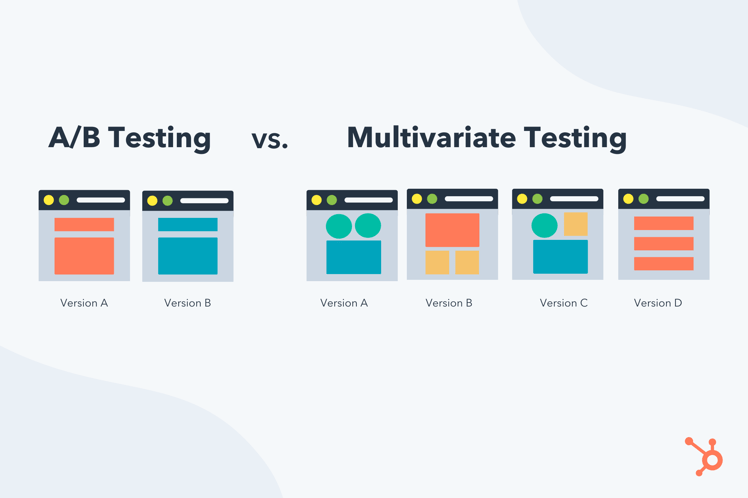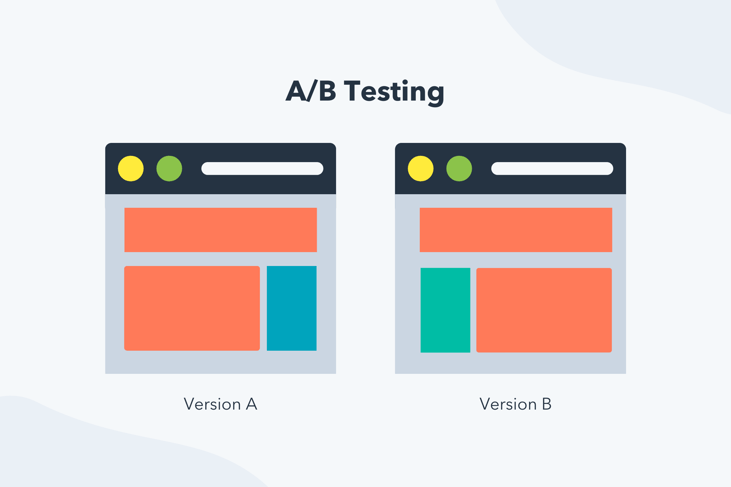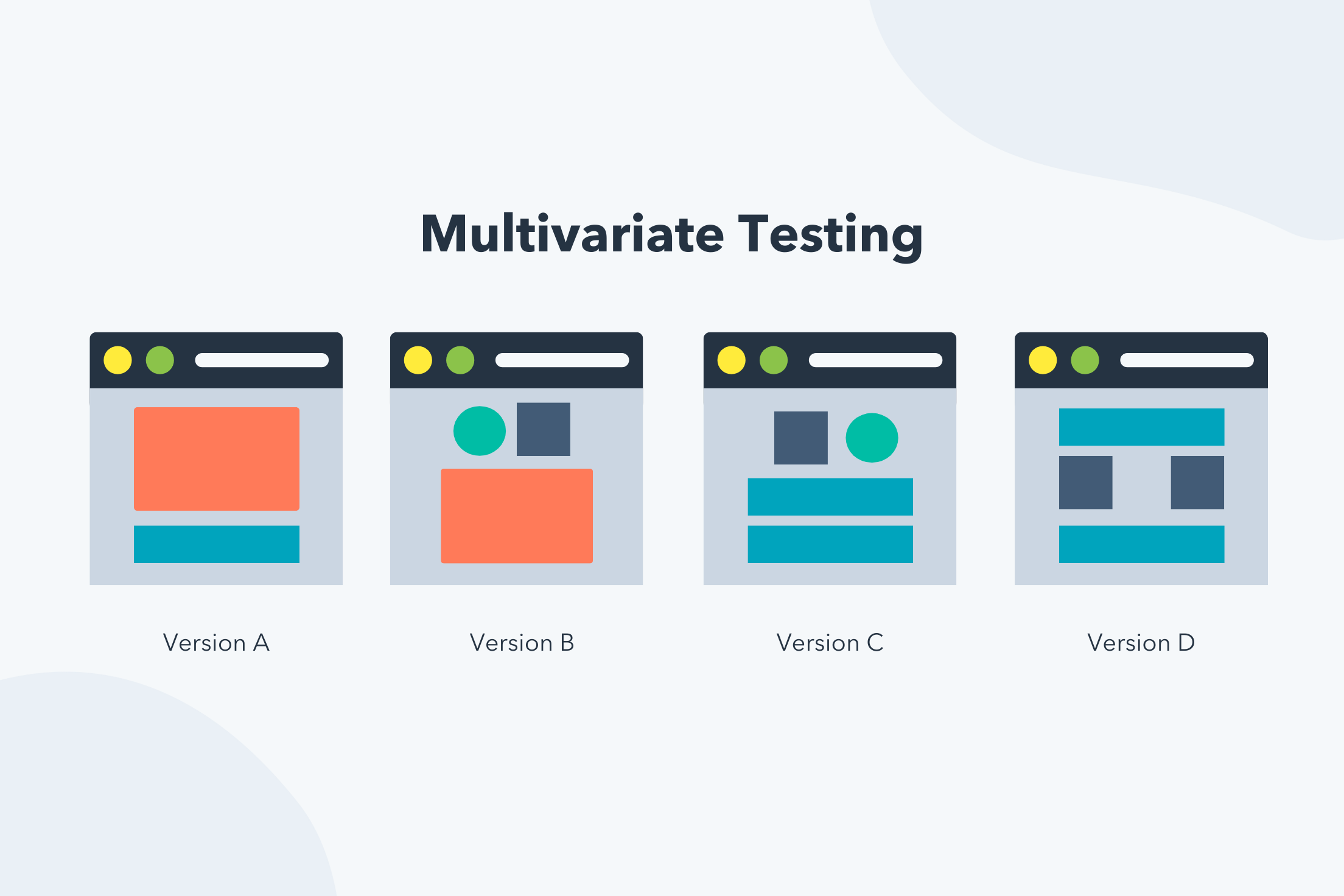
How It Differs From A/B Testing
- August 28, 2023
- Knowledge Base
- 0 Comments

There’s seemingly no end to what you can test in your marketing — conversion rates, offer placements, and even which titles perform better.

There’s also no end to the type of test you can run, but two players take center stage: A/B and multivariate testing. Is there a huge difference between them, though? And will my results be affected if I choose the wrong one?
Yes, there is a difference, and yes, your results will be affected. Not to fear, though; in this post, we’re going to break down the difference between A/B tests and multivariate tests and tell you exactly when to use each, so your tests run smoothly and your inbound marketing can go from working pretty well to amazingly well.
Table of Contents
Multivariate Testing vs. A/B Testing
Multivariate Testing vs. A/B Testing
While an A/B test allows marketers to learn which major formatting of a site or piece of content is most engaging, multivariate allows them to zone in on which specific page elements are most engaging by showing audiences multiple unique variations.
The critical difference is that A/B testing focuses on two variables, while multivariate is 2+ variables. As the difference between both tests can be seen visually, let’s go over an example.
Multivariate vs. A/B Testing Example

In the image above, the A/B test is simply two different versions of the same element, while the multivariate test looks at multiple different page elements (variables) in different positions on the page.
Given their differences, let’s learn more about each one and when to leverage each test in your marketing.
What is an A/B test?
When you perform an A/B test you create two different versions of something — like a landing page, call to action (CTA), or web page — to see which performs better. The image below is an example of an A/B test.

A/B testing is often done with two different variables, but there are A/B/C tests that test three different web page versions. An A/B/C/D test that tests four different web page versions, and so on.
If you need help running an A/B test, you can use a tool like HubSpot’s Free Landing Page Builder, which allows you to test different page variations against each other. The best part? HubSpot will automatically crown a winner based on the results.
When to Use A/B Testing
Use A/B testing when you want to test two specific designs against each other, and you want meaningful results fast. It is also the correct method to choose if you don’t have a ton of traffic to your site as you’re only testing two variables, so significant data is not needed.
Advantages and Limitations of A/B Testing
| Advantages of a/b testing | limitations of a/b testing |
|
Data is easier to track. |
The focus is on two single variables, so test results are hyper-focused. |
|
With fewer variables to test, you don’t need an enormous amount of traffic to uncover which variable is more effective. |
|
| You can obtain results quickly. |
What is multivariate testing?
A multivariate test shows audiences variations of different elements on a page (CTA placement, text placement, images, etc.) in order to understand which aspects are most engaging to users.
When you perform a multivariate test, you’re not simply testing a different version of a web page like you are with an A/B test. Instead, you’ll get an idea of which combination of elements does the best job of helping you reach your goals — whether that’s more CTA clicks, form sign-ups, or time spent on the page.
The multivariate test is more complicated and best suited for more advanced marketing testers, as it tests multiple variables and how they interact with one another, giving far more possible combinations for the site visitor to experience.
When to Use Multivariate Testing
Only use a multivariate test if you have a significant amount of website traffic. That way, you can truly determine which components of your website yield the best results.
Advantages and Limitations of Multivariate Testing
| advantages of multivariate testing | limitations of multivariate testing |
| It helps you redesign site pages to have the most impact. | Requires significant site traffic since you need enough data to test all variables accurately, and not all businesses have this traffic. |
| You can test more than two variables at the same time. | Is a more advanced and involved testing process. |
| Results are significant because multivariate testing requires considerable website traffic. | |
| You can extrapolate results because multiple variables are being tested, and you have significant data points. |
Multivariate Testing Example
While an A/B test might show audiences two different website formats or designs, multivariate might show differences such as different wording or fonts on a call-to-action to see which button gets clicked more.
This is a tricky concept, and a visual usually helps clarify complicated ideas. The image below is an example of a multivariate test.
In this example, notice how each variation plays with placement, color, style, and format. Unlike A/B testing, where the two variations are usually noticeably different, the differences in variables in a multivariate test may be more subtle.

Back to You
Remember that for multivariate and A/B tests to give meaningful results, it’s not enough to have site traffic overall — the pages you’re testing also need to receive substantial traffic. So, make sure you select pages that people can find and regularly visit so your test yields enough data to analyze.





